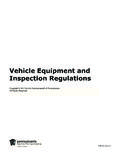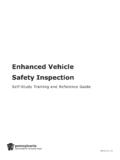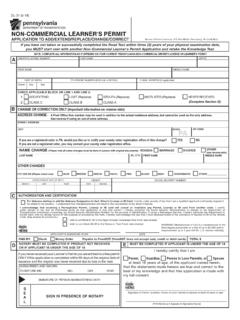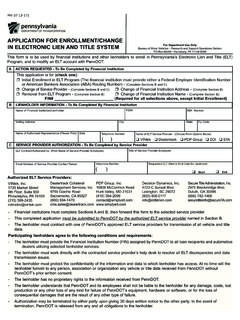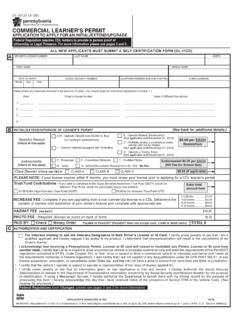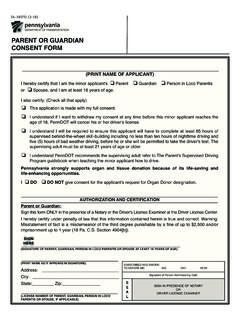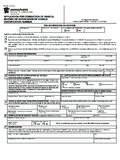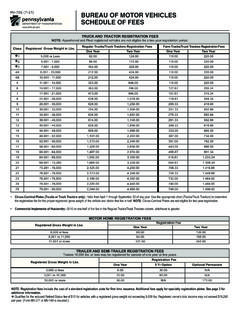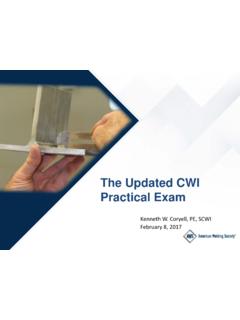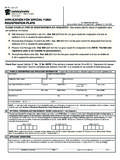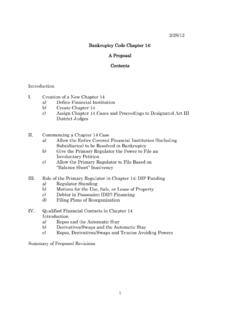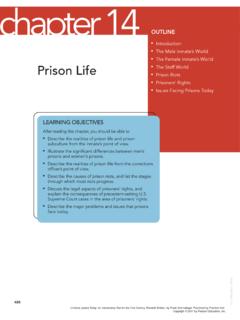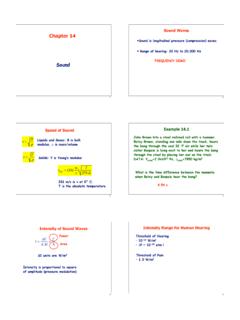Transcription of Chapter 14
1 Chapter 14 - Post-Construction Stormwater Management Publication 584 2010 Edition 14 - 1 Chapter 14 POST-CONSTRUCTION STORMWATER MANAGEMENT INTRODUCTION A. Overview. The purpose of this Chapter is to provide design guidelines for post-construction stormwater management (PCSM) controls intended to manage stormwater after construction of a project is complete.
2 The traditional design of storm drainage systems has been to collect and convey storm runoff as rapidly as possible to a suitable location where it may or may not have been detained, depending on the age and characteristics of the system, before it was discharged to the environment. The engineering community is now more aware of the effects of poor water quality upon the environment and the impact that uncontrolled increases in runoff can have on the environment and the public. This Chapter provides general design criteria for detention/retention storage basins, procedures for sizing basins, procedures for performing routing calculations, and design guidelines for other post-construction stormwater management controls.
3 B. Background. The Department performs a broad spectrum of activities in order to maintain and improve the state's roadway system. Highway improvement projects involve, to varying degrees, altering the existing landscape through a combination of clearing, compaction, and impervious cover. These activities disrupt the natural hydrologic processes that reduce surface runoff, such as interception and infiltration. It has been well-documented that the development of land into less pervious areas generally leads to an increase in stormwater runoff volume, higher peak flows, higher average temperature of runoff, collection of a larger mass of pollutants (due to lack of infiltration capacity), and an increased flooding hazard for downstream waterways.
4 All of these factors contribute to degradation changes in the physical, chemical, and biological properties of the receiving waters. That being said, not all roadway improvement and land development projects are created equal in terms of their potential to impact receiving waters. Many land development projects involve the clearing of forests and meadows, and developing productive farmlands. On the other hand, the vast majority of Department projects involve improvements within an existing legal right-of-way, which has already been largely disturbed in order to construct the highway facility.
5 Thus, the Department's improvement and maintenance projects tend to have less of an effect on runoff characteristics than other types of development projects. However, there are effects associated with most non-maintenance activities, and those effects are generally proportional to the amount of additional impervious area being proposed. Among Pennsylvania's water quality standards are antidegradation requirements, which are described in Section of the PA Code. The antidegradation requirements are aimed at protecting the existing instream uses of surface waters, in addition to maintaining and protecting the water quality of High Quality (HQ) and Exceptional Value (EV) waters.
6 Stormwater runoff is considered a point source discharge which has the potential to impact existing uses and water quality, so it is regulated by PA DEP. Three key measures are used to assess the potential for impacts from stormwater runoff volume, rate, and quality. The goal of PCSM is to prevent or minimize any increase in the quantity (rate and volume) of runoff while also minimizing the factors affecting the quality. The best way to achieve antidegradation is to mimic the natural, pre-development hydrologic conditions, which are usually dominated by infiltration and evapotranspiration (ET see definitions).
7 This is a two-fold solution because stormwater management strategies that address quantity normally also address quality. However, the inherent characteristics of highway projects sometimes limit the options for volume reduction. Therefore, it is also important to have a combination of strategies that reduce the amount of runoff being generated. PCSM is required whenever a project (1) requires an NPDES construction stormwater permit (see Section ), or (2) is located in a watershed with an approved Act 167 stormwater management plan.
8 The Department recognized that a policy on antidegradation and PCSM was needed in order to establish guidelines for addressing project-induced changes in runoff. The policy, which is outlined in Section , is a tool for achieving a target, which is consistent with Pennsylvania's antidegradation regulations and federal NPDES requirements. The guidelines that are provided were developed with the most common types of Department construction projects and Chapter 14 - Post-Construction Stormwater Management Publication 584 2010 Edition 14 - 2circumstances in mind.
9 However, it is important to keep in mind that there will be projects with circumstances that require considerations beyond those recommended for these typical situations. HIGHWAY SPECIFIC STORMWATER ISSUES In Pennsylvania, the three primary concerns related to the effects of runoff on water resources from roadway facilities are: Stream channel erosion and flooding resulting from increases in runoff rate and volume; Water quality impacts to streams and groundwater aquifers from particulates, floatables, hydrocarbons, and deicing materials; and Thermal impact on streams caused by heat transfer from pavement to runoff and loss of riparian buffer vegetation.
10 Chapter 7 of the PA DEP Stormwater BMP Manual (herein referred to as the "BMP Manual") lists a number of additional common pollutant constituents in highway runoff. Many, if not most of these constituents occur in relatively small concentrations and are usually addressed when the increases in the rate and volume of runoff are mitigated. The items listed above are the primary concerns related to potential water resources impacts and are discussed below in more detail. A. Increases in Runoff Rate and Volume.
